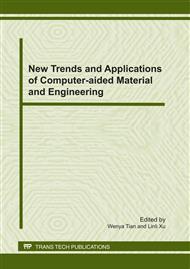[1]
Ferber, J., Multi-agent systems: an introduction to distributed artificial intelligence: Addison-Wesley Harlow (1999).
Google Scholar
[2]
Thrun, S., Probabilistic robotics. Communications of the ACM. 45(2002), pp.52-57.
Google Scholar
[3]
Thrun, S., Robotic mapping: a survey, in Exploring Artificial Intelligence in the New Millennium, Morgan Kaufmann Publishers Inc. pp.1-35 (2003).
Google Scholar
[4]
Thrun, S., A probabilistic on-line mapping algorithm for teams of mobile robots. The International Journal of Robotics Research. 20(2001), p.335.
DOI: 10.1177/02783640122067435
Google Scholar
[5]
Tercero, J., C. Paredis, and P. Khosla, Continuous probabilistic mapping by autonomous robots. Experimental Robotics VI(2000), pp.275-286.
DOI: 10.1007/bfb0119406
Google Scholar
[6]
Huber, D.F. and M. Hebert, A new approach to 3-D terrain mapping, in Intelligent Robots and Systems, 1999. IROS '99. Proceedings. 1999 IEEE/RSJ International Conference on (1999).
DOI: 10.1109/iros.1999.812830
Google Scholar
[7]
Kim, S. and S.Y. Oh, SLAM in Indoor Environments using Omni-directional Vertical and Horizontal Line Features. Journal of Intelligent and Robotic Systems. 51(2008), pp.31-43.
DOI: 10.1007/s10846-007-9179-0
Google Scholar
[8]
Pascual, B., et al., SLAM and Map Merging. Journal of Physical Agents. 3(2009), p.13.
Google Scholar
[9]
Burgard, W., et al., Collaborative multi-robot exploration, in Robotics and Automation, 2000. Proceedings. ICRA '00. IEEE International Conference on (2000).
DOI: 10.1109/robot.2000.844100
Google Scholar
[10]
Rekleitis, I., G. Dudek, and E. Milios, Probabilistic cooperative localization and mapping in practice, in IEEE International Conference on Robotics and Automation, IEEE: Taipei, Taiwan (2003).
DOI: 10.1109/robot.2003.1241873
Google Scholar
[11]
Fregene, K.O.C., Distributed intelligent control of hybrid multiagent systems, University of Waterloo (2003).
Google Scholar
[12]
Fregene, K., et al., A class of intelligent agents for coordinated control of outdoor terrain mapping UGVs. Engineering Applications of Artificial Intelligence. 18(2005), pp.513-531.
DOI: 10.1016/j.engappai.2004.12.007
Google Scholar
[13]
Daili, Z., Multi-agent based control of large-scale complex systems employing distributed dynamic inference engine, in Aerospace Engineering, Georgia Institute of Technology (2010).
Google Scholar
[14]
WU, H., S. -Y. QIN, and Y. -L. ZHANG, The application of hybrid multi-agent techniques in robotic mapping terrains, in SCILAB Research, Development and Applications, Tsinghua University Press and Springer. pp.193-218 (2005).
Google Scholar
[15]
Wooldridge, M., An introduction to multiagent systems: Wiley (2009).
Google Scholar


